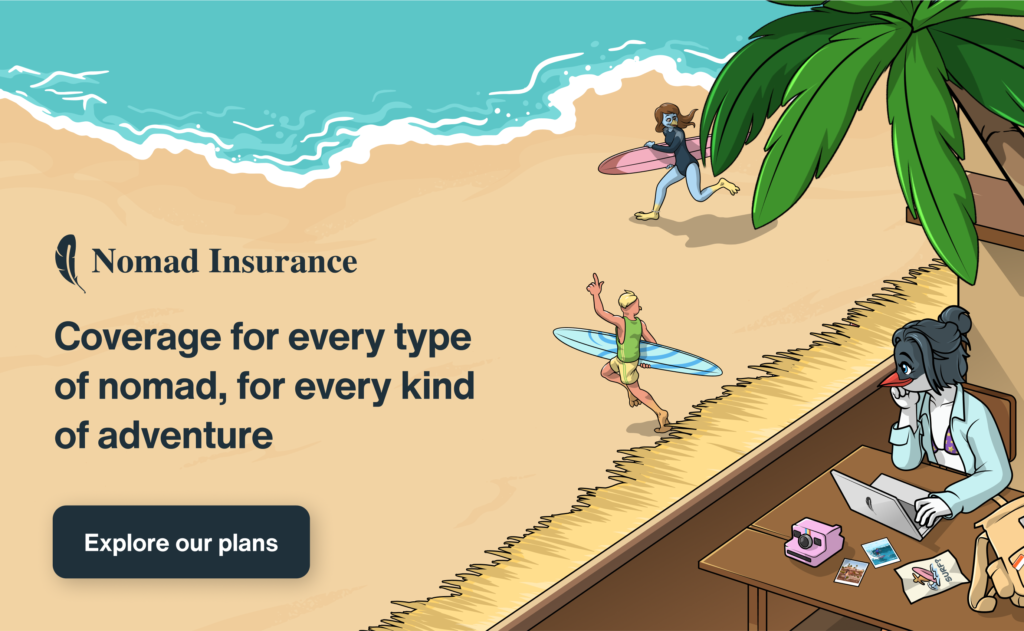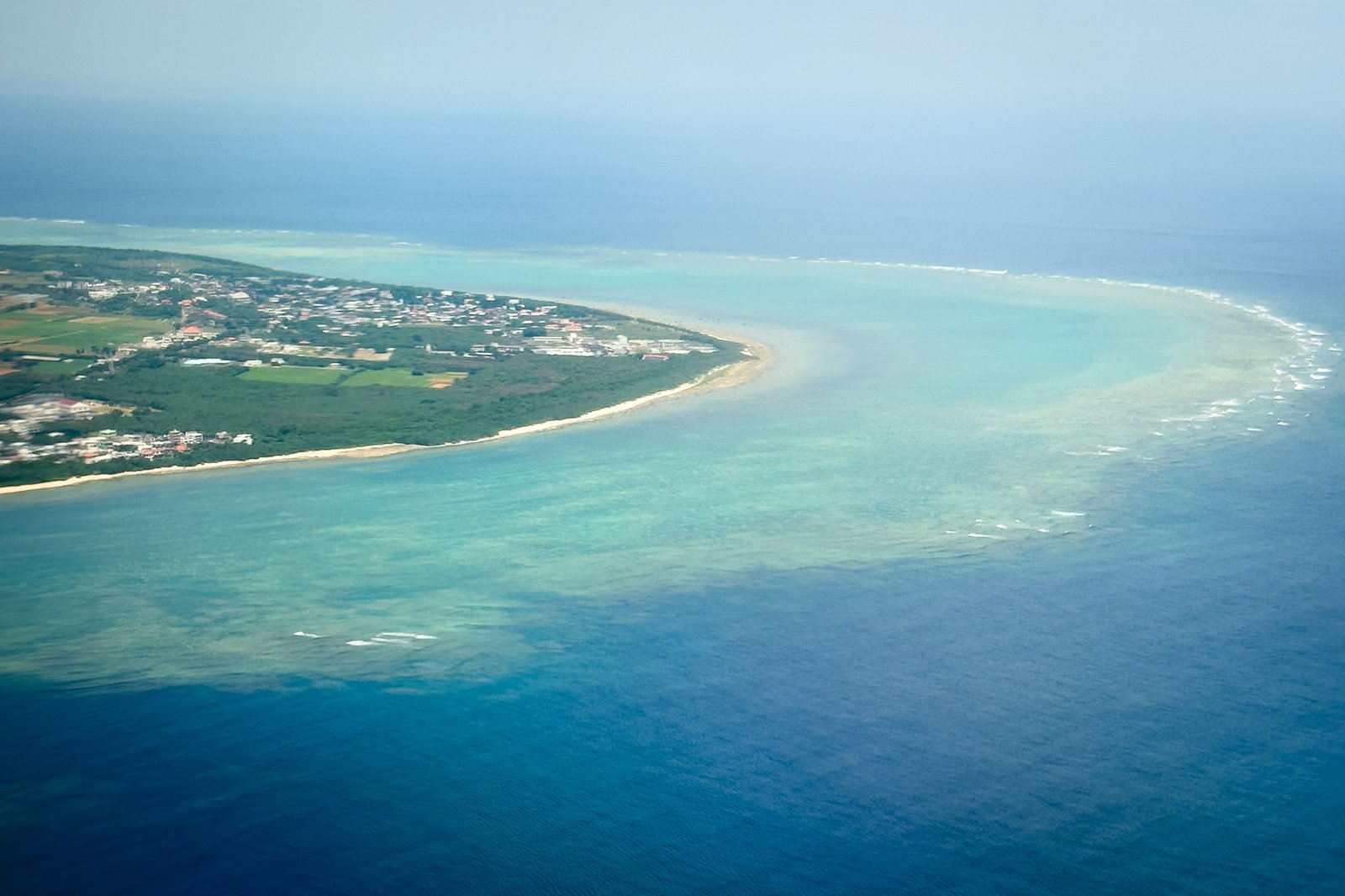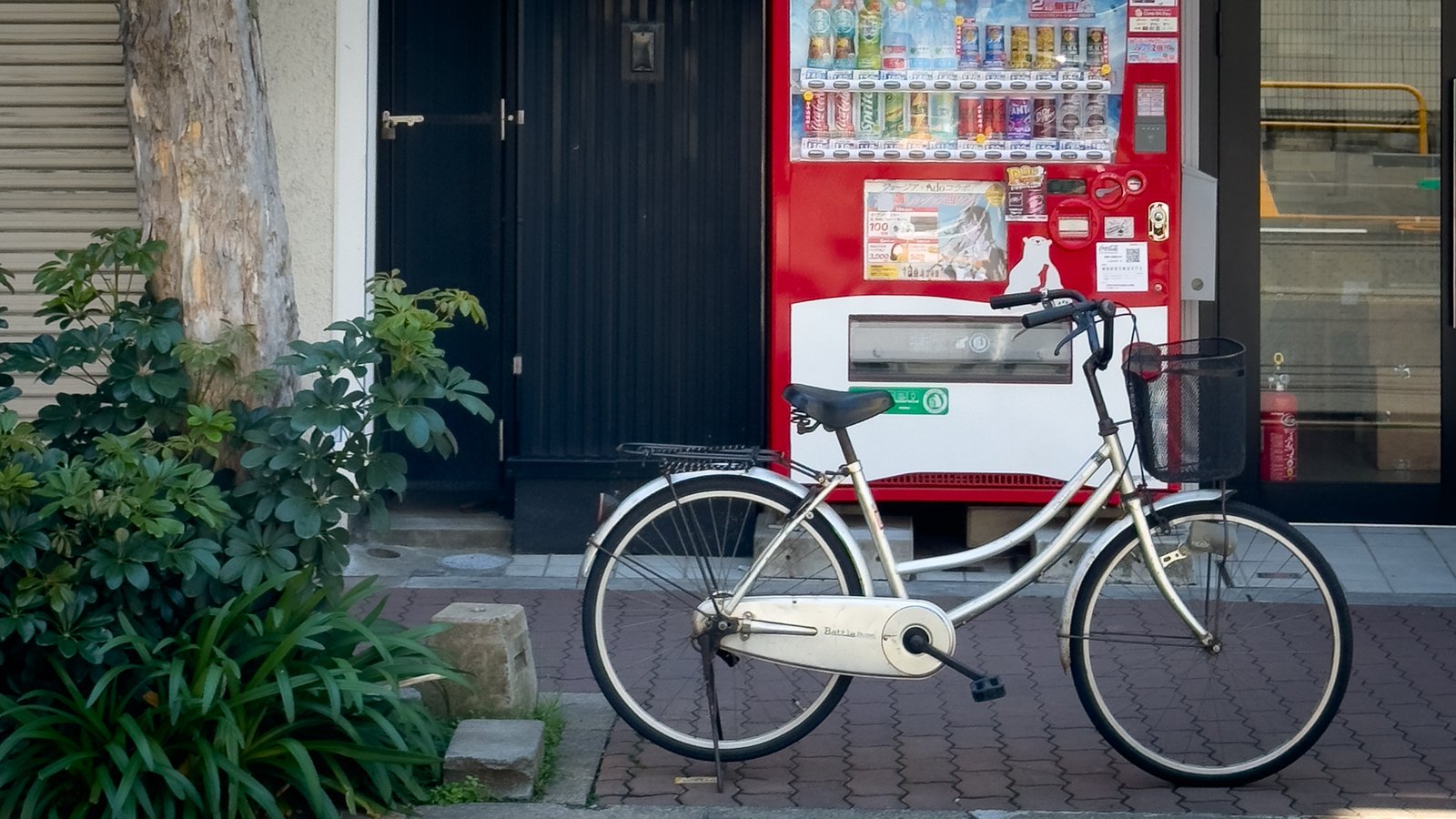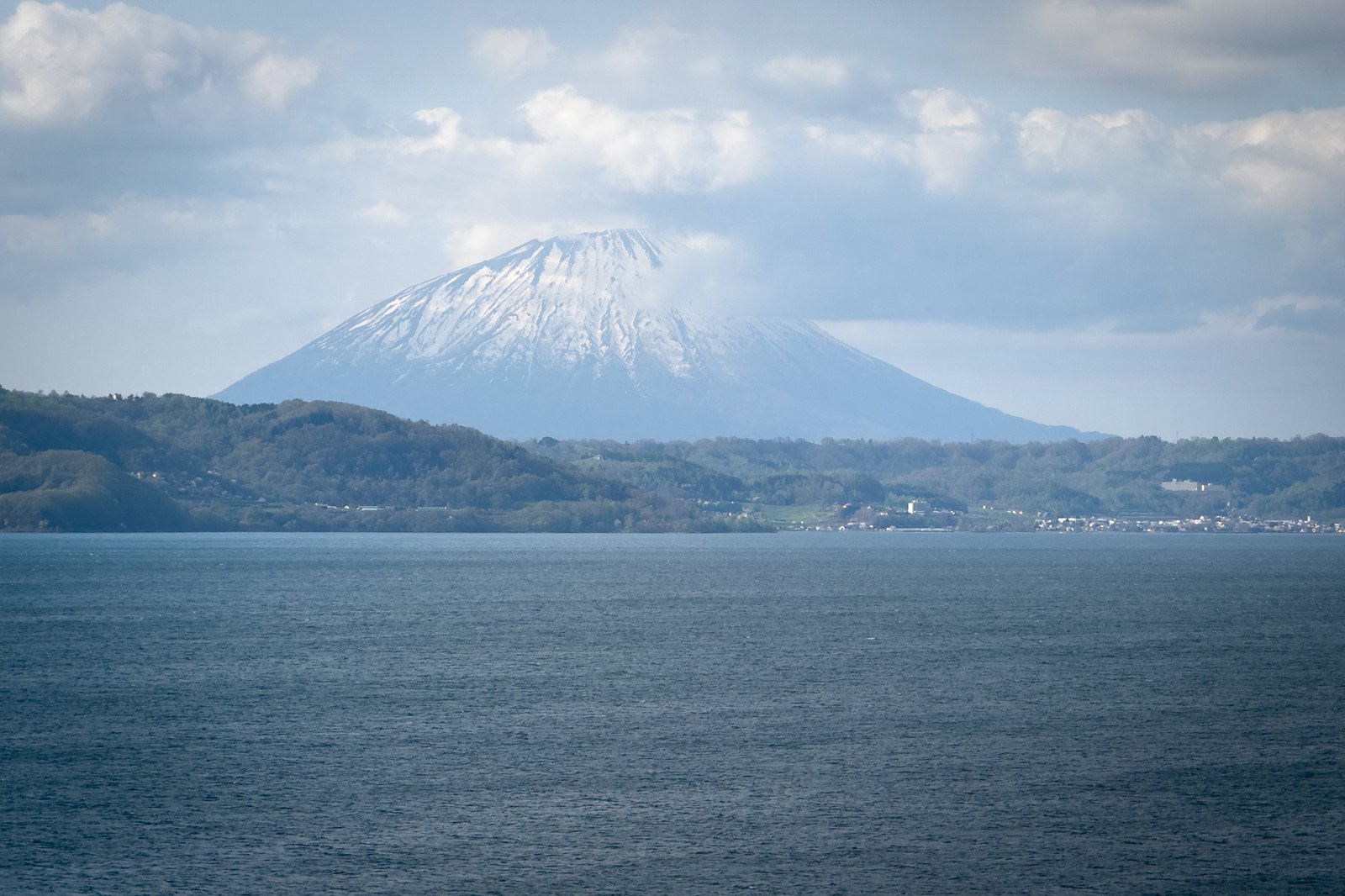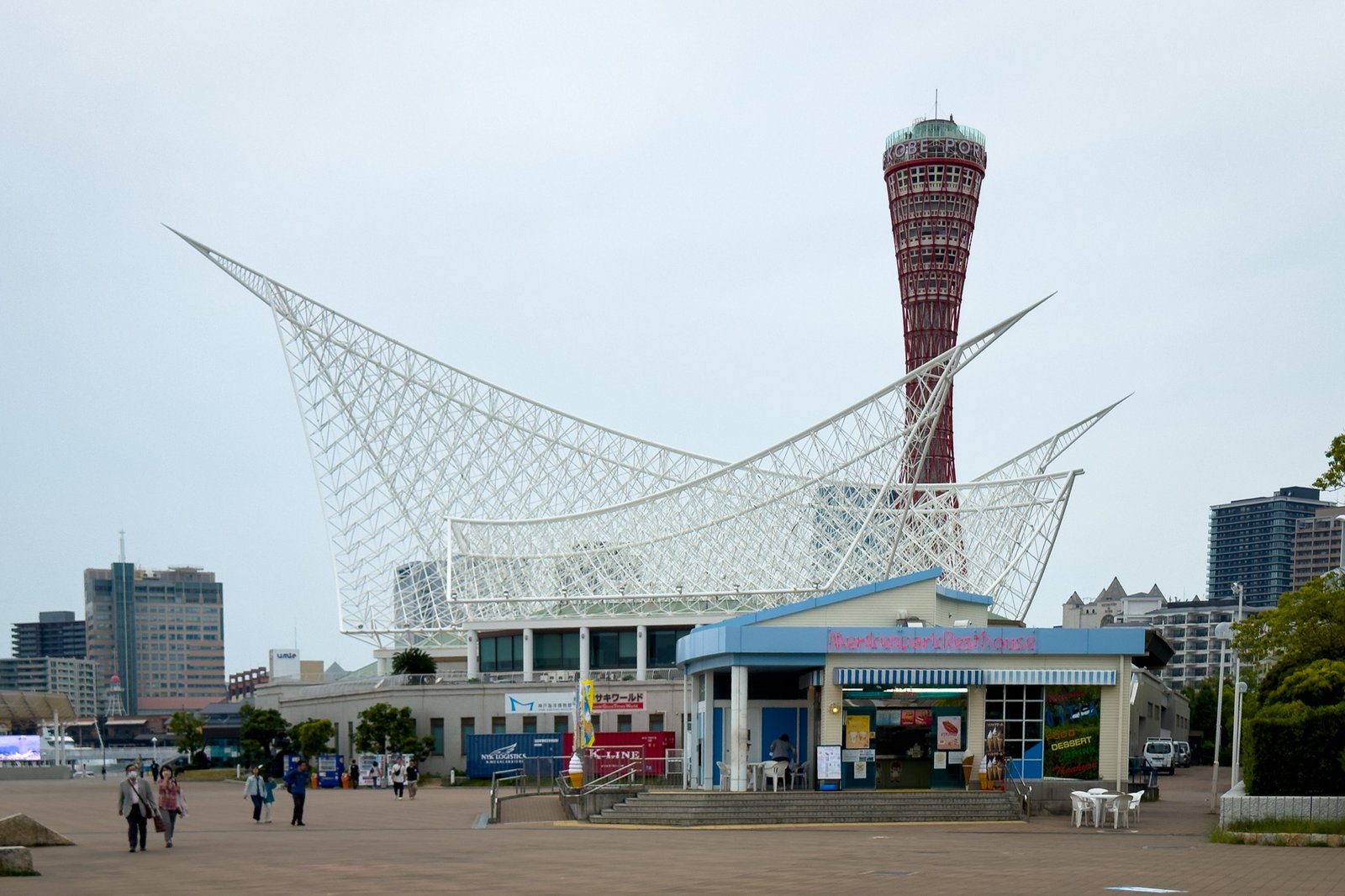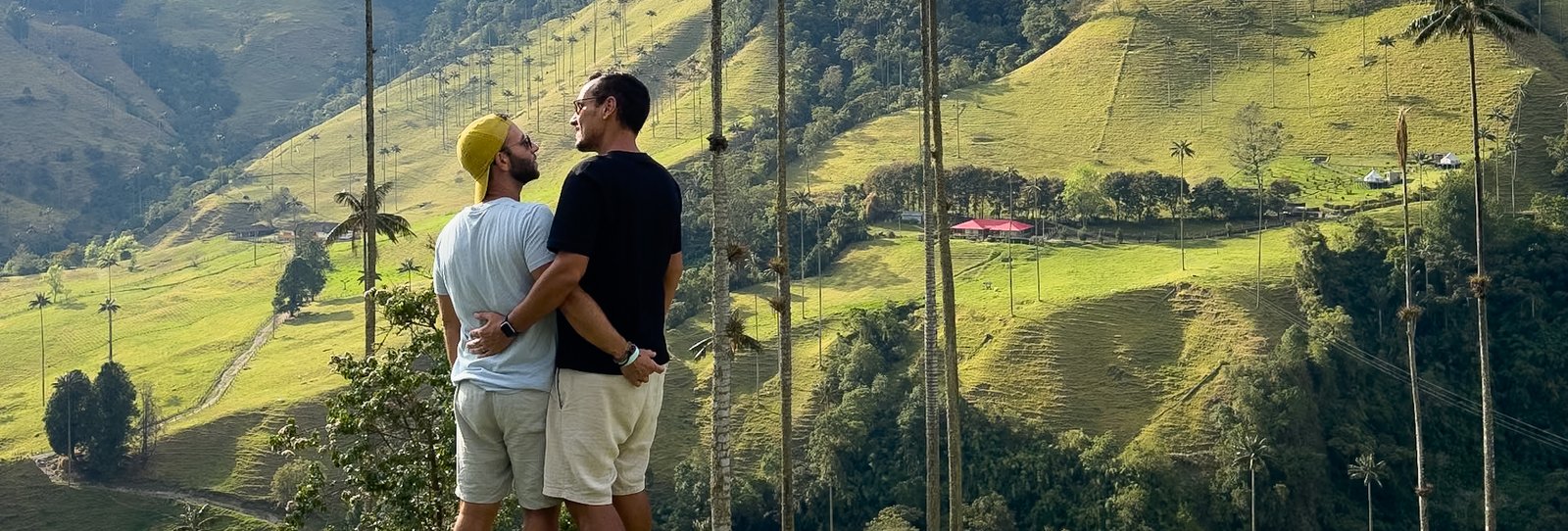Taking a road trip through Okinawa was one of those simple decisions that end up becoming memorable. It was there, between the intense blue of the sea and the vegetation-covered hills, that we discovered National Route 58 in Okinawa—one of the most beautiful roads in Japan and, honestly, one of the most relaxing we’ve ever driven.
Japan is known for its vibrant cities and efficient trains, but in Okinawa everything seems to move at a different pace. And this road, which follows the coast from Naha to the northern tip of the island, takes you on a journey that’s much more than just getting from point A to point B. It leads you to hidden beaches, villages full of character, and landscapes that make you pull over just to stare. If you enjoy driving, exploring at your own pace, and getting lost in beautiful paths, this is the perfect trip for you.
Table of Contents
Why we chose Route 58 for this trip
When we started planning our trip to Okinawa, we realized there was a lot to see—and relying solely on public transportation would significantly limit what we could do. So, we rented a car, opened the map, and let ourselves be drawn to the most promising road on the island: National Route 58.
Connecting the south of the island to the far north, this road follows much of the west coast. Along the way, we passed through cities, small fishing villages, incredible beaches, dramatic cliffs, and tropical forests. But above all, we encountered the true spirit of Okinawa—calm, welcoming, and deeply connected to nature.
The best part? It’s an easy road to drive, with good signage and plenty of opportunities to stop and explore without rushing.
How we prepared for this road trip
We’re not the type to plan every minute of a trip, but we also don’t like to wander aimlessly. Before landing in Naha, we made sure to book the car through the Klook platform—a secure and affordable option that gave us peace of mind. You can also book through Discovercars.
We knew driving in Okinawa is on the left side (like in the UK), but after the first few minutes of adjusting, it became natural. The roads are in great condition, traffic is calm, and local drivers are very respectful.
We brought the essentials: GPS on our phones (the internet connection was stable even in remote areas), snacks, water, sunscreen, and, of course, a good playlist for the road. We also checked in advance where we could stop—both for sightseeing and for food or rest. And it was exactly this mix of preparation and room for improvisation that made this road trip so special.
Itinerary on National Route 58 in Okinawa
Day 1 – From Naha to American Village: The adventure begins
We left Naha with a full tank and that great feeling of starting a journey. The city faded behind us as we approached the coast, and it only took a few kilometers on Route 58 to realize we were somewhere special.
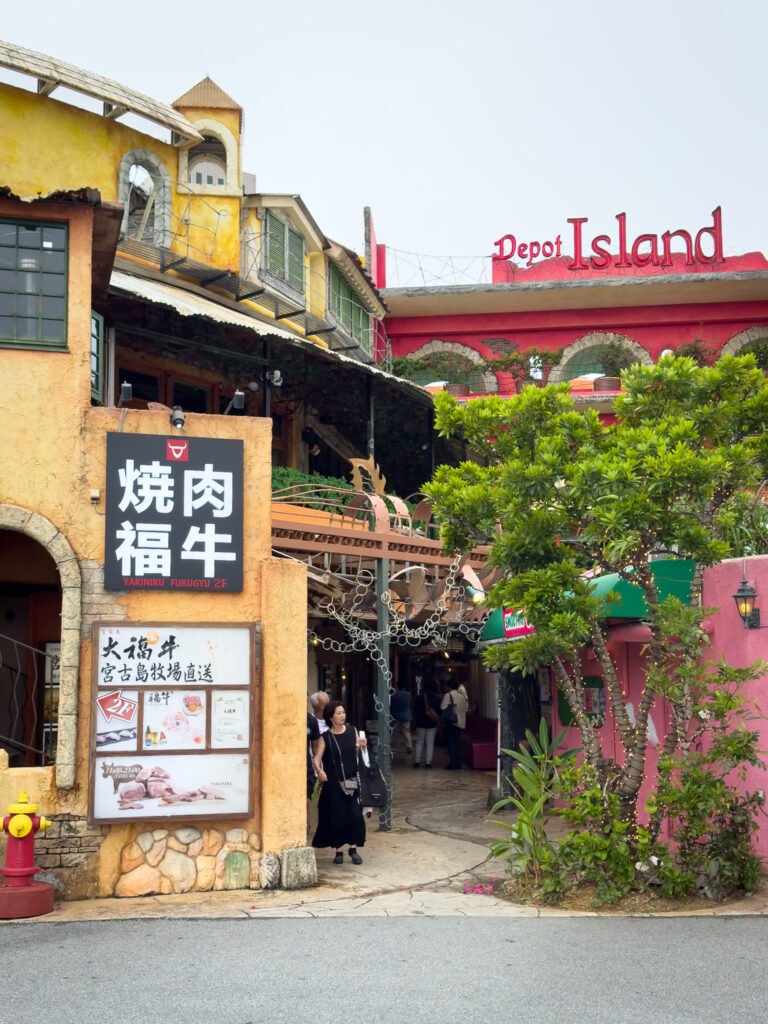
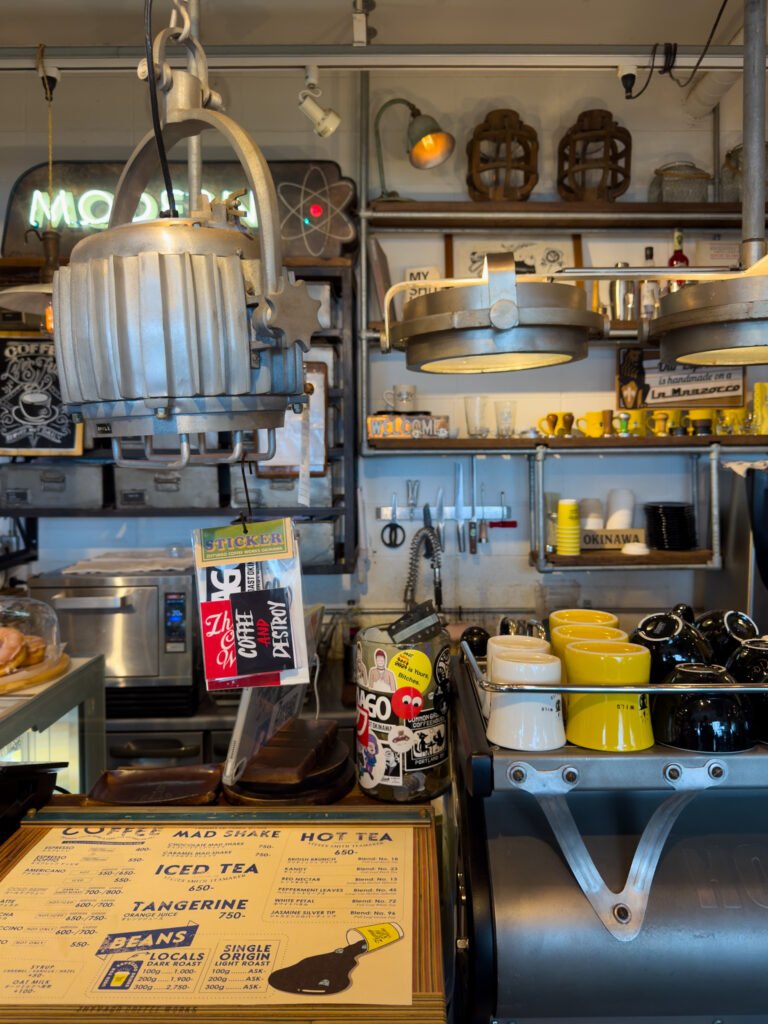
The first major stop was at American Village in Chatan. We admit—at first it seemed too touristy. But as soon as we parked and started exploring, we realized there was something unique there. It’s like a small American town planted by the sea, full of colorful buildings, quirky shops, and restaurants for all tastes. We went straight to ZHYVAGO Coffee Works, right by the sea. The coffee was great, but it was the view and the relaxed atmosphere that kept us there longer.

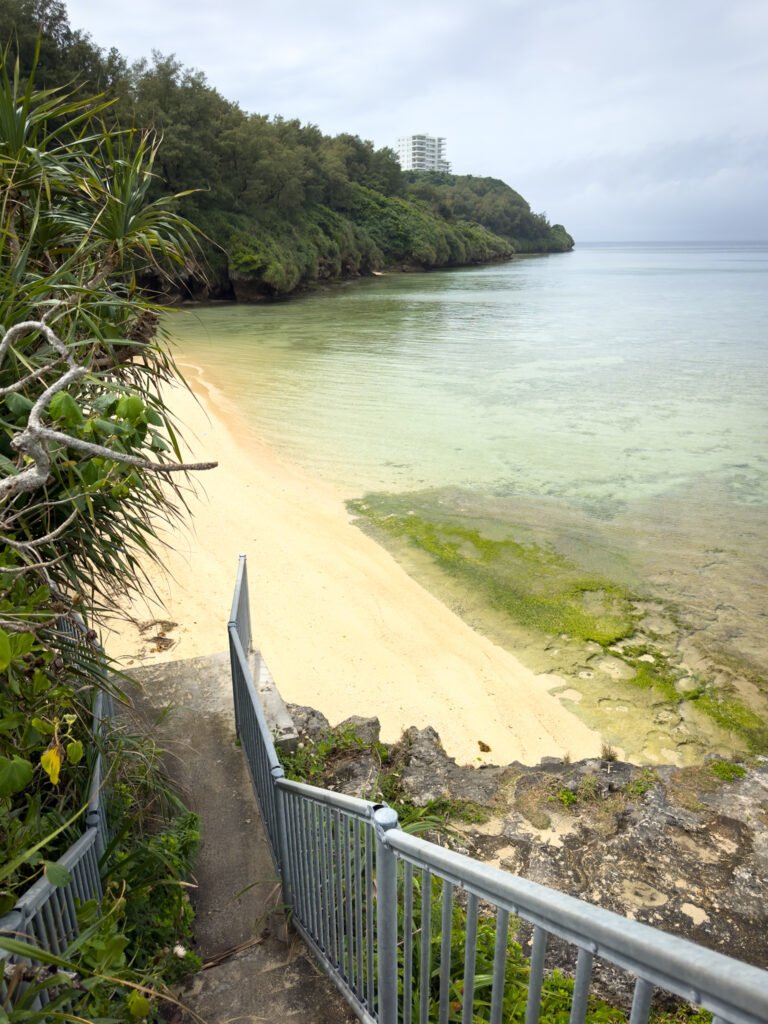
We continued up the west coast. We stopped at Cape Zanpa, an impressive cliff that defies the sea. The lighthouse at the top adds a dramatic touch to the landscape, and the wind there seems to clear your mind. There weren’t many people, which made the experience even more special.
Further ahead, we found Senaha Coast—one of those unexpected discoveries. The water was so transparent it almost looked like glass, and some hidden stairs led us to a small beach we had all to ourselves. We stayed there in silence, feet in the sand, feeling like we’d found a well-kept secret.
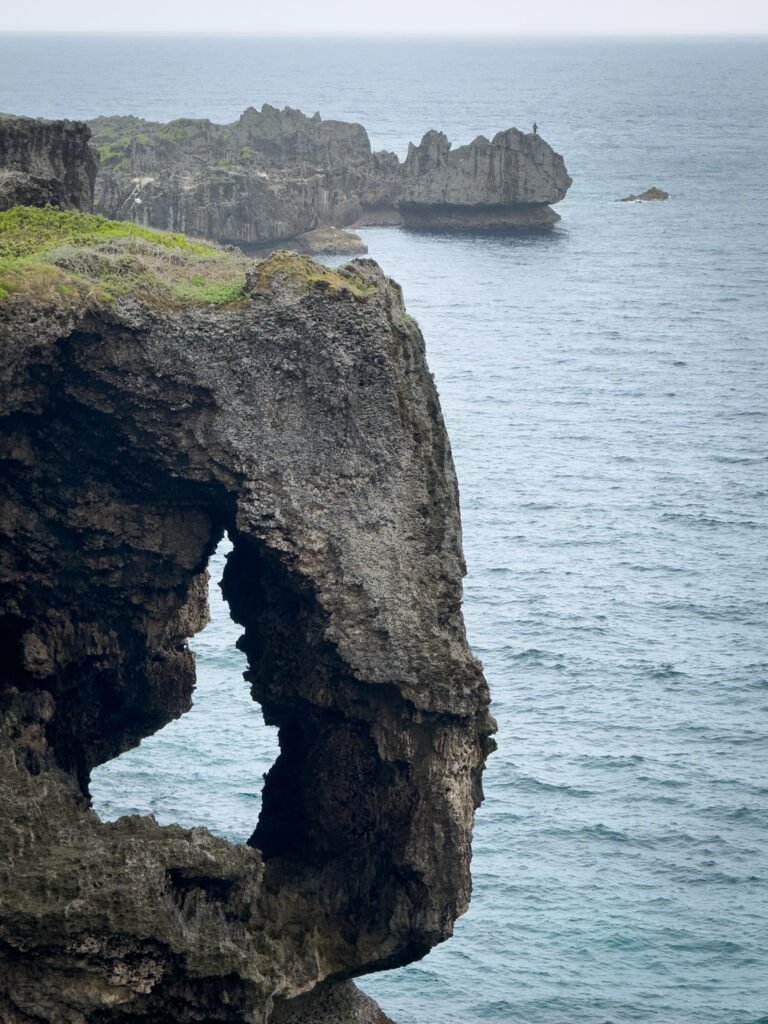
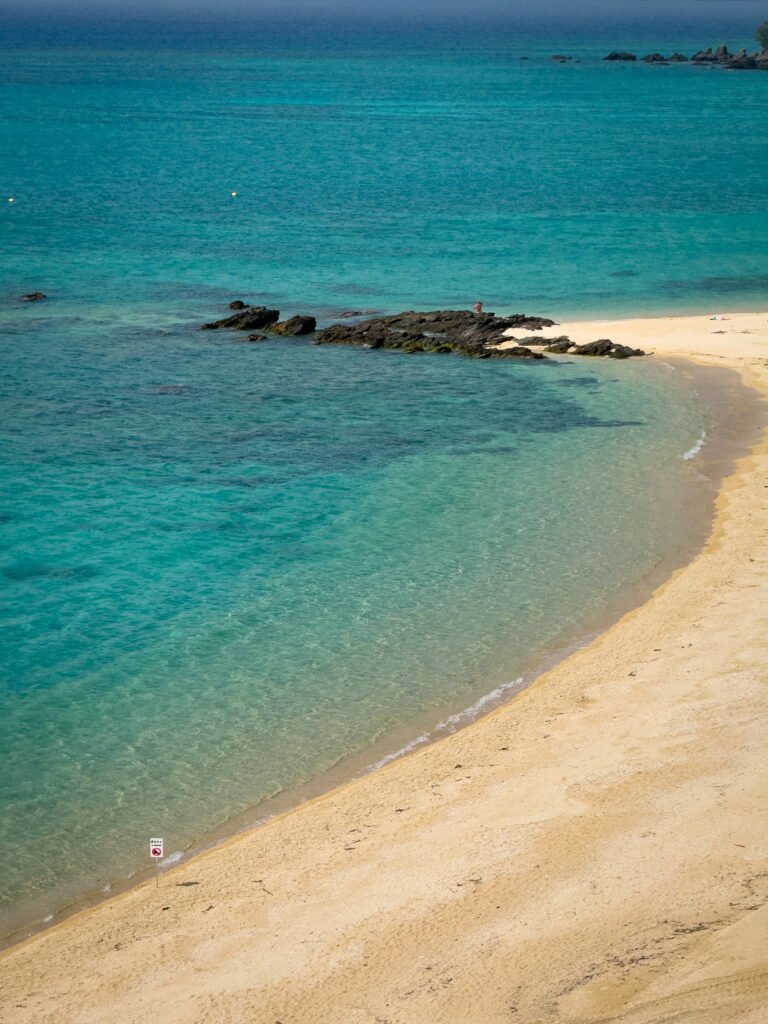
On the way to Nago, we also stopped at Cape Manzamo. The view is breathtaking, but what really won us over was a small stand called Mitsuya Honpo, where we tried Okinawa’s famous donuts. Freshly made, still warm, with traditional flavors like purple sweet potato—they were, without a doubt, one of the best surprises of the day.
We stayed overnight at Kise Beach, at a hotel right by the sea. See here more about where to stay in Okinawa.
Day 2 – Okinawa Aquarium
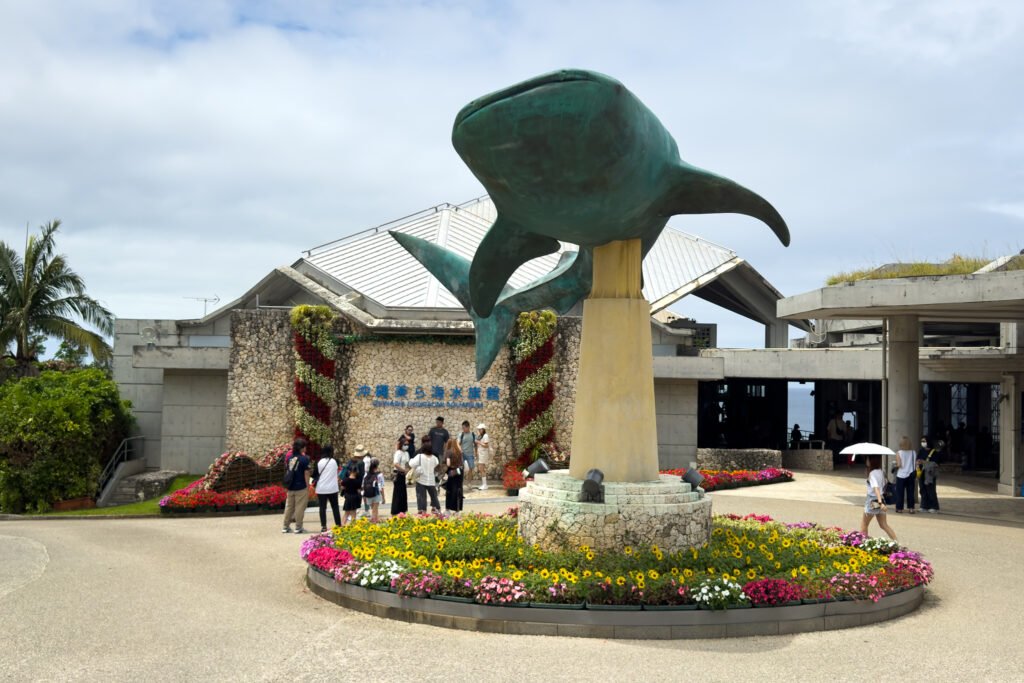
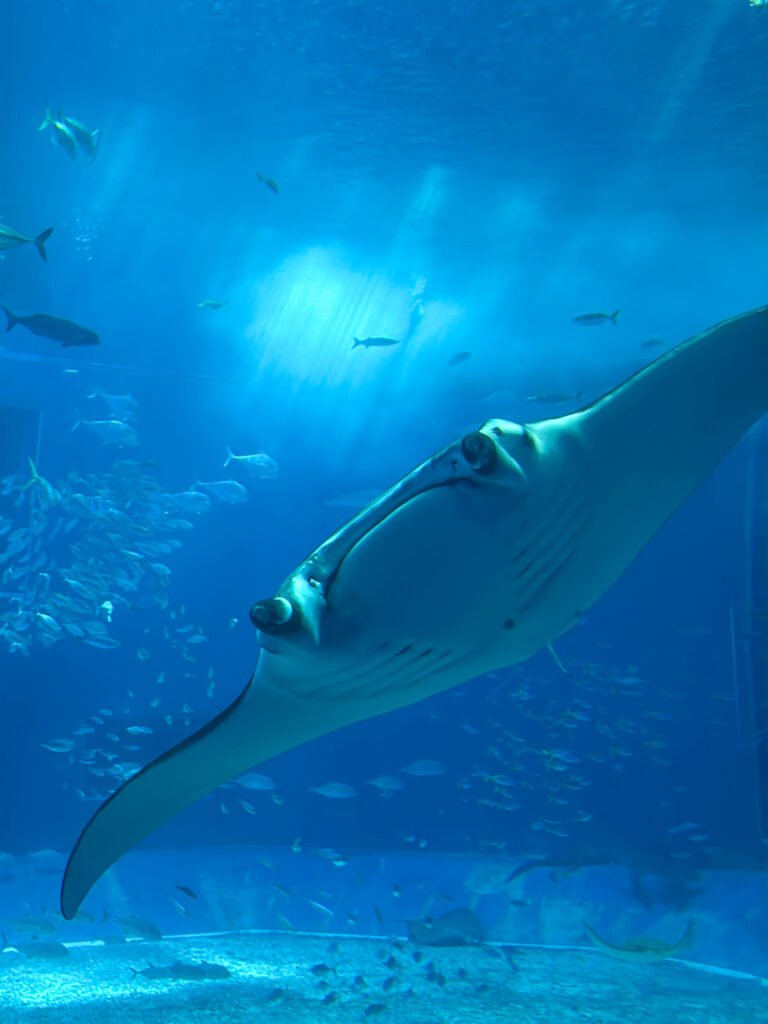
The morning started with a unique view of the sea from our hotel. We headed north, with a detour to Sesoko Island, but our real goal was visiting the Okinawa Churaumi Aquarium. We bought tickets online here. We spent the day at the aquarium, and it was a fantastic experience—not just because of the famous whale shark tank, but also because of the surrounding gardens and coastal landscapes. We returned to Kise, where we were staying.
Day 3 – Northern Part of the Island
The next day, we continued our journey north, where National Route 58 crosses one of the wildest and most authentic areas of the island: Yanbaru National Park. Officially established in 2016, this park protects the region’s unique biodiversity and represents one of the last strongholds of subtropical forest in its natural state in Okinawa. The area is home to endemic species, such as the yanbaru kuina (Gallirallus okinawae), a rare bird found only here.
As we progressed, traffic disappeared, and the road became more peaceful, winding through dense forests and green slopes. That’s when the trip changed tone—fewer stops, more contemplation. The landscape forced us to slow down, not because of the road, but because there was too much to see.
At one point, we stopped at a small, unnamed viewpoint—the kind that doesn’t appear in guidebooks. The view of the rugged coastline and the deep blue sea stayed with us. Sometimes, you don’t need to do anything extraordinary to feel like you’re exactly where you should be—an idea aligned with the Japanese philosophy of ichi-go ichi-e, which values the unrepeatable beauty of each moment (Cousineau, 2010).
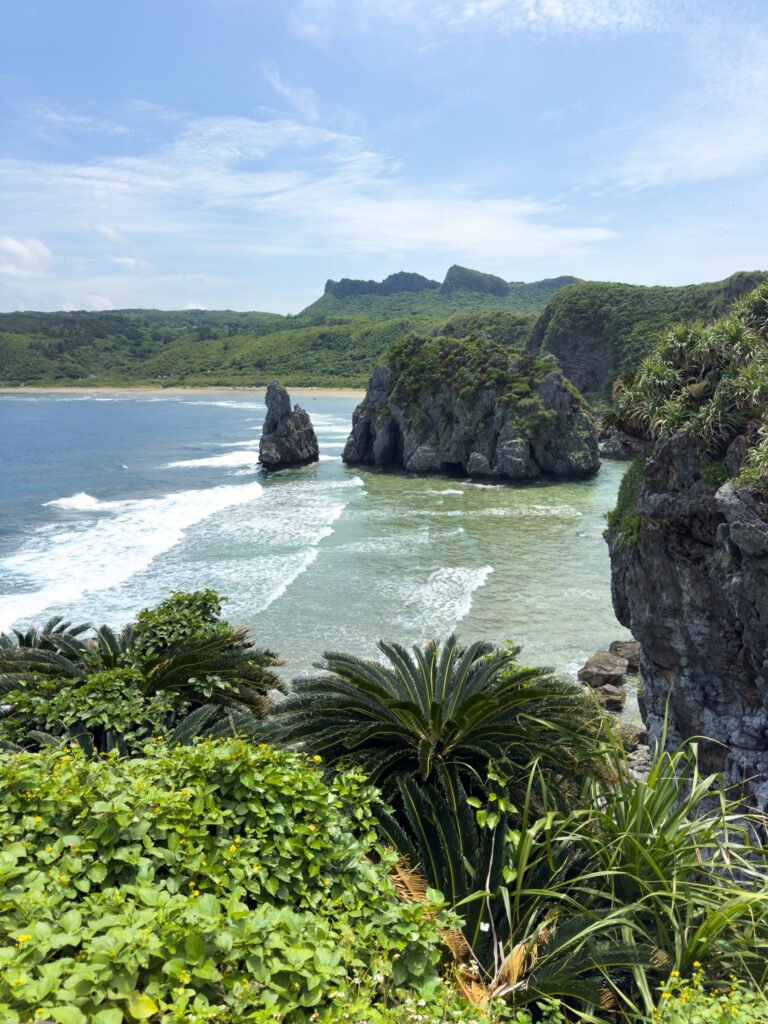
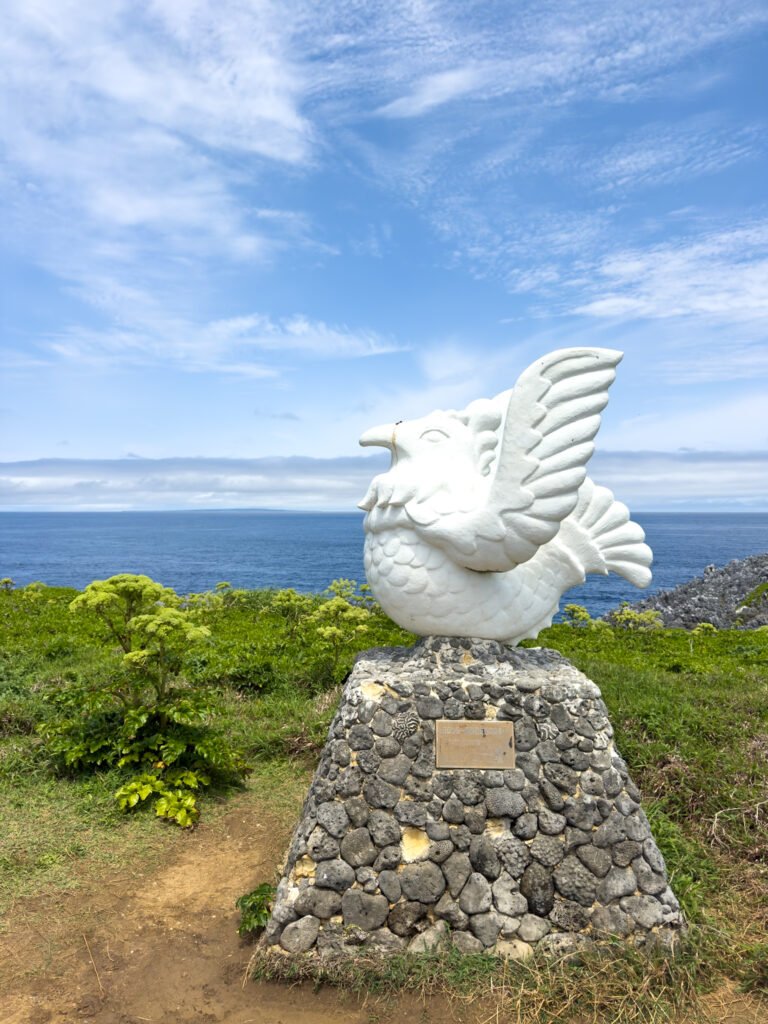
We continued to the northernmost point of Okinawa—Cape Hedo (Hedo-misaki). Route 58 in this part of the journey was probably the most beautiful of all. On one side, the deep blue sea; on the other, green-covered hills. It was impossible not to pull over occasionally just to take in the scenery.
Arriving at Cape Hedo was like reaching the end of the world. Up there, at the viewpoint, we felt small before the steep cliffs and the ocean stretching to the horizon. The silence was total, interrupted only by the sound of the wind and waves crashing against the rocks. There were a few stalls with local snacks, but what really stayed with us was the peace of that place—a peace often described by travelers as part of the charm of rural Okinawa, where time seems to move slower.
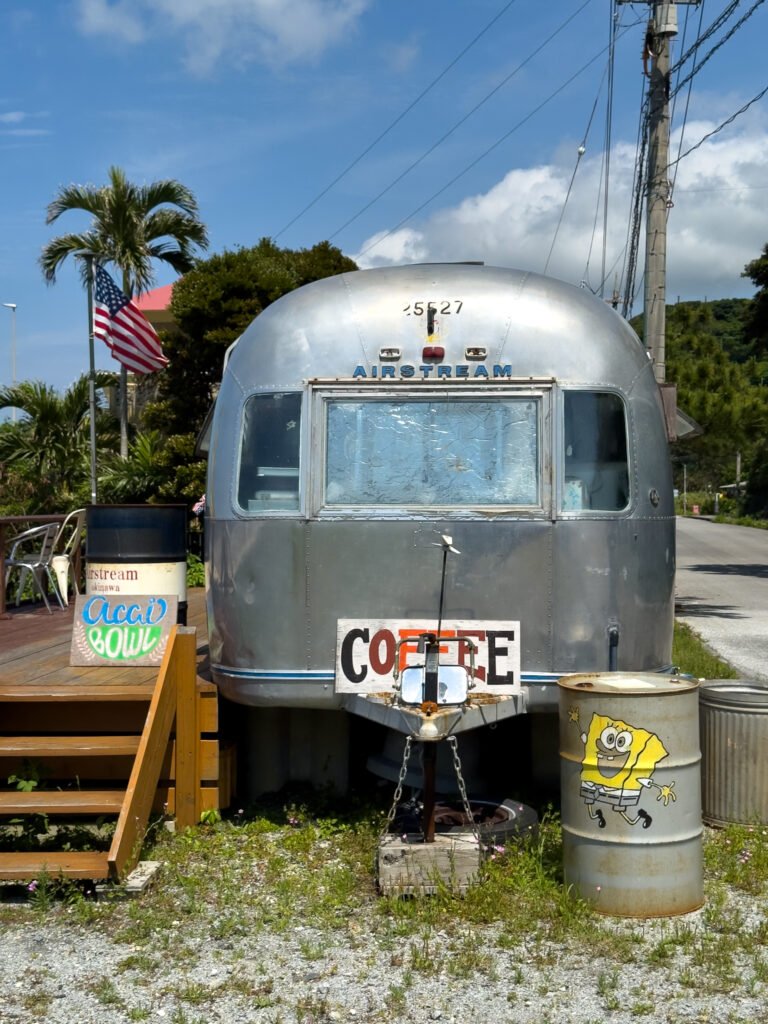

Before heading back south, we found a café set up in an old Airstream trailer parked right by the sea. We ordered coffee and toast, sat on a wooden bench, and just stayed there—no rush, just enjoying the moment. It was one of those simple pauses that end up becoming unforgettable.
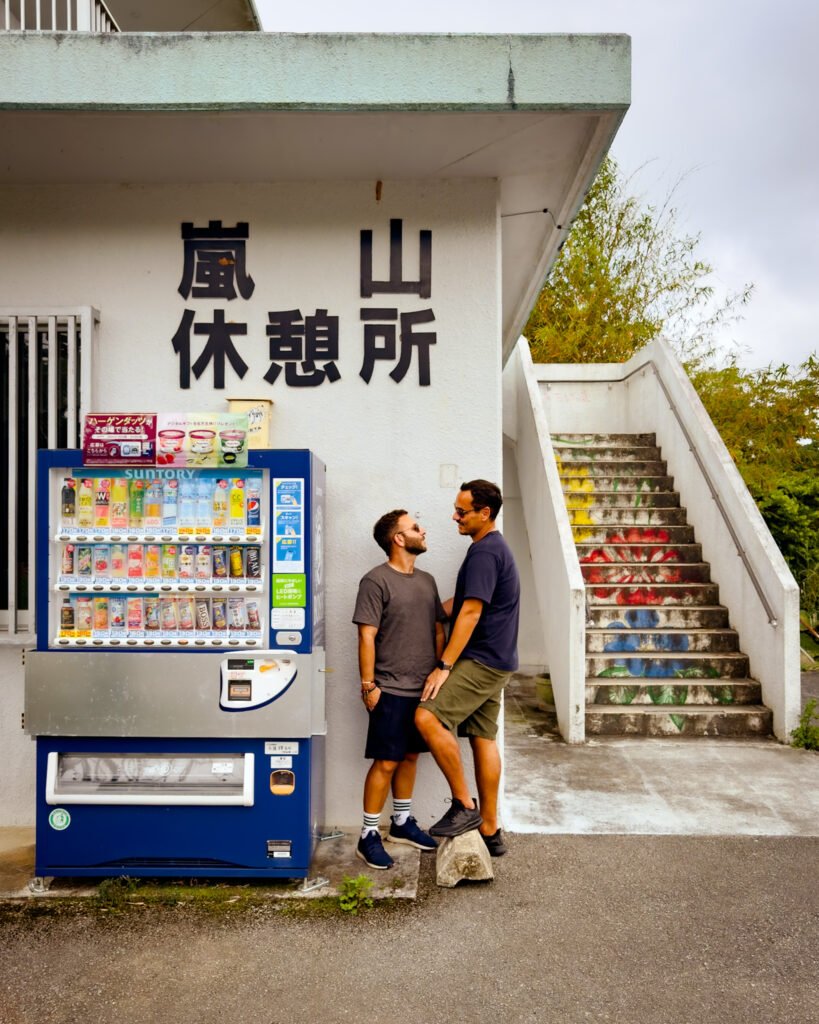
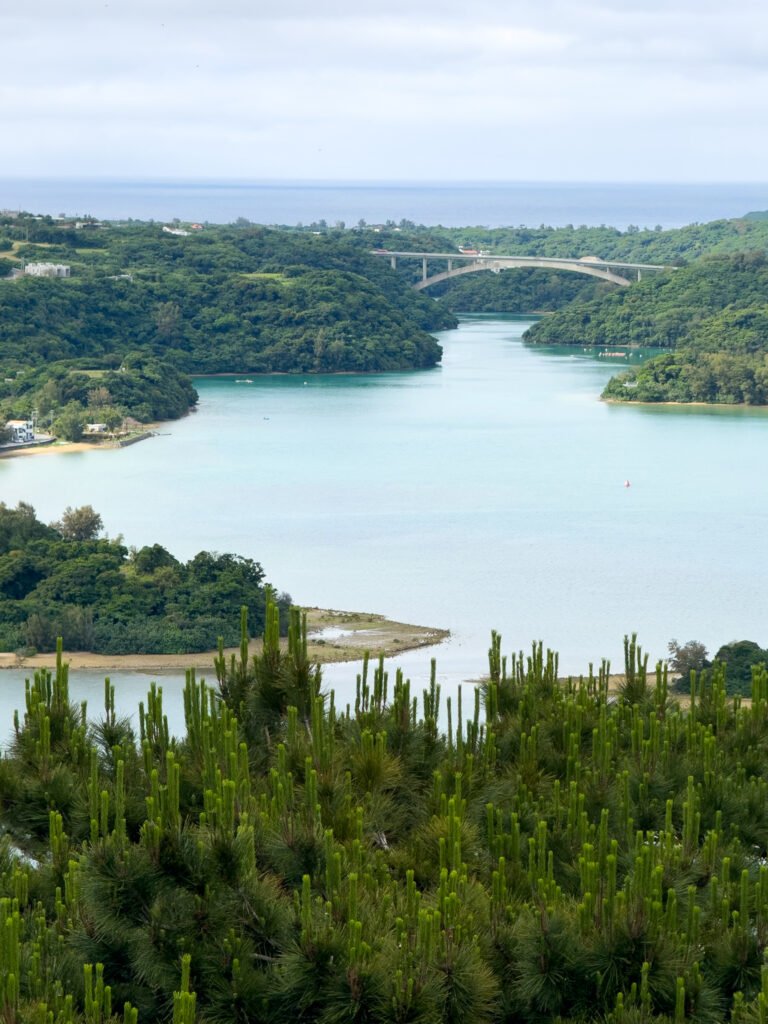
The way back to Kise was just as calm as the way up. The beauty of the road made us want to prolong every kilometer. We took the opportunity to stop at viewpoints like the Arashiyama Observatory and coastal villages we’d skipped on the way up.
By late afternoon, we were back in the Kise area and spent the rest of the day relaxing on the beach and reviewing some of the photos and videos we’d taken. There’s nothing like pausing to savor what we’ve experienced—literally and in every sense.
Where to stay in Okinawa along Route 58
During our road trip, we split our stay between two different areas of the island: Naha and Kise. In Naha, we stayed two nights at Little Island Okinawa, a simple, well-located place with everything we needed to start the trip on the right foot. Perfect for exploring the city on foot before hitting the road. Naha, being the capital of the prefecture, offers easy access to services, transportation, and cultural attractions like the famous Shuri Castle, a UNESCO World Heritage Site.
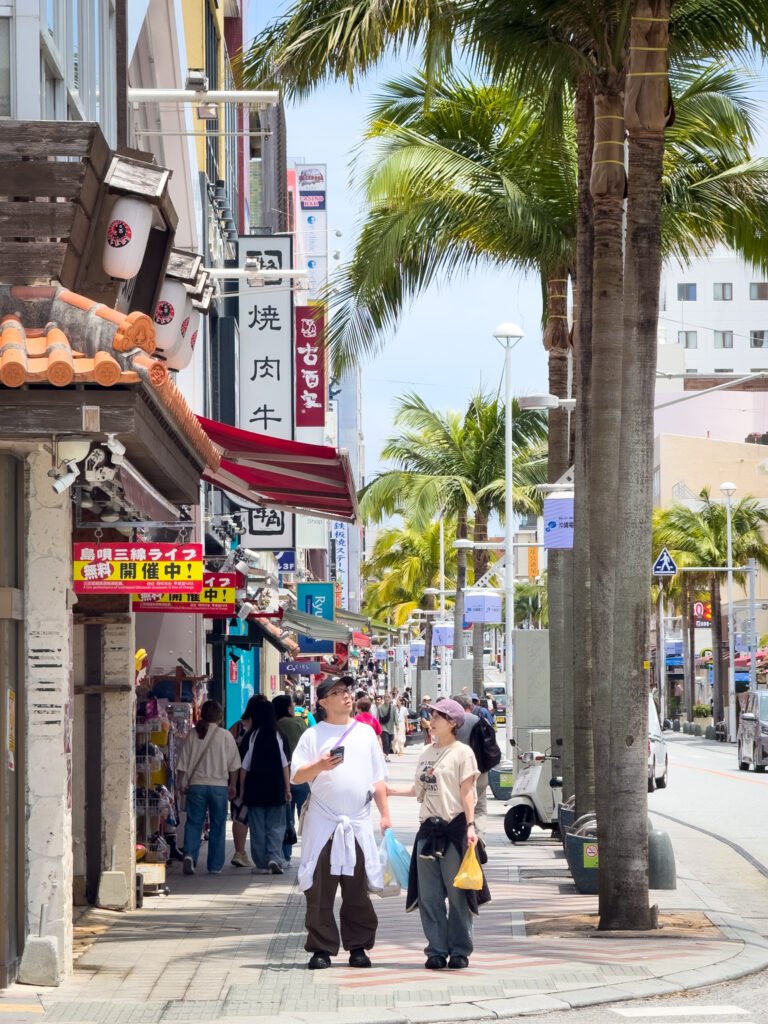
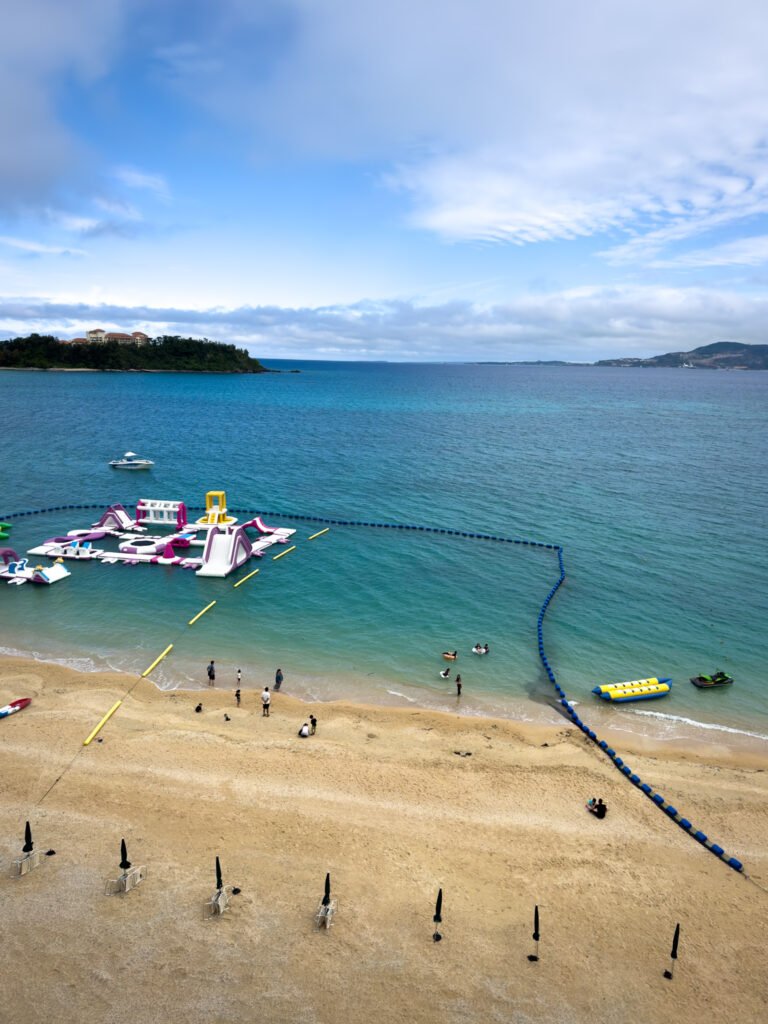
In the Kise area, we stayed three nights at Kanehide Kise Beach Palace. This was our seaside retreat—perfect for resting after days on the road. The ocean view at breakfast and evening walks on the beach were moments we truly cherished.
If you’re looking for something more budget-friendly, there are also several guesthouses and local accommodations along the road, especially in villages like Onna and Motobu. The most important thing is to choose places that let you wake up calmly and start each travel day without rushing—because this road demands exactly that: time to be savored.
See more options where to stay in Okinawa.
What we ate along Route 58
One of the things that surprised us most in Okinawa was the food. Route 58—which crosses the island from south to north—ended up being our best food guide. As we drove north, we stopped at simple, local places without much planning—just with a desire to discover the flavors that are part of Okinawa’s identity.
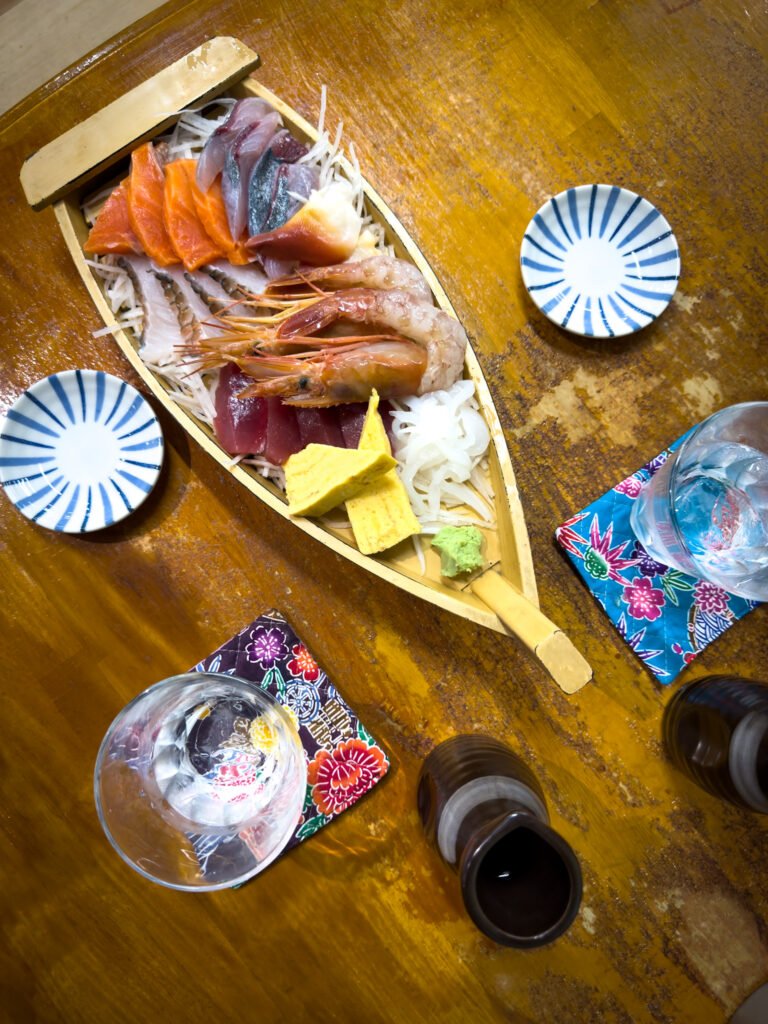
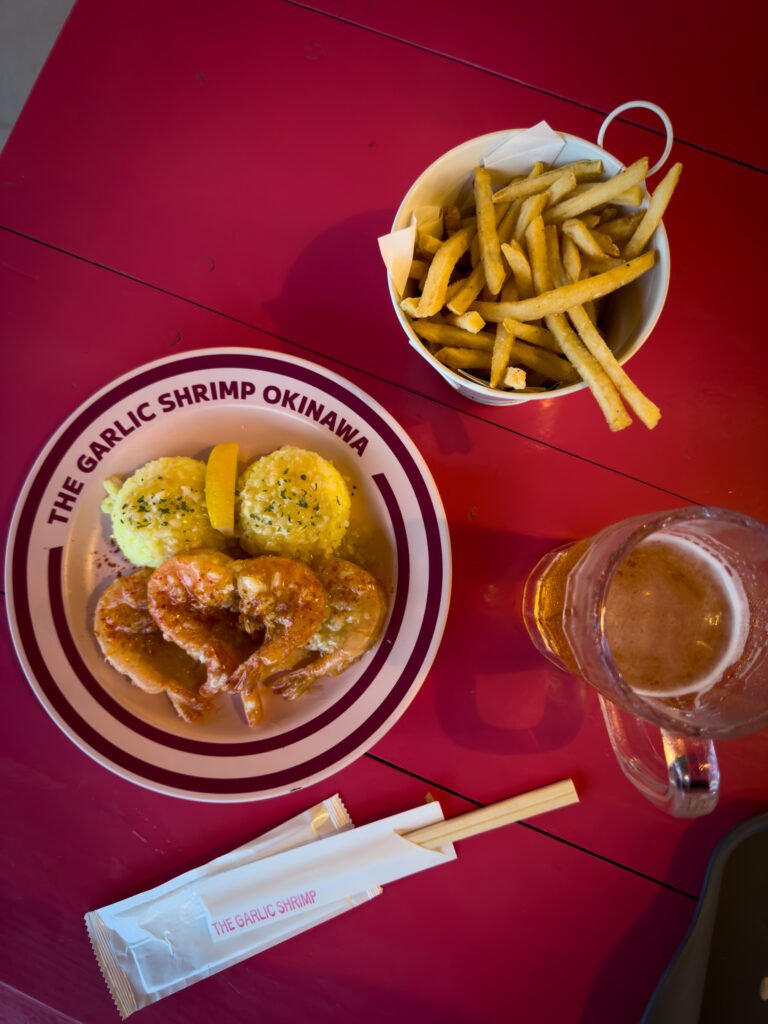
We started in Naha at the Makishi Public Market. On the ground floor, we chose fresh fish from one of the stalls and then went upstairs to the restaurant. They served us sashimi freshly cut, with that pure, fresh taste of the sea. It was the perfect introduction to the island’s cuisine.
Further up, near Cape Manzamo, we made a sweet stop at Mitsuya Honpo, a tiny shop selling Okinawa’s famous donuts. They were still warm, super fluffy, and with different flavors. We were fans at first bite. These donuts, known as sata andagi, are a local specialty inspired by Chinese sweets and very common at regional festivals (Japan Centre, 2023).
Passing through Nago, we tried one of the region’s most traditional dishes: Okinawa soba. It’s a unique type of noodle made with wheat flour, served in a light but flavorful broth, usually with pork. It’s simple, comforting, and very typical—we really felt like we were tasting something deeply rooted in the local culture.
On the day we went to the northern tip of the island, to Cape Hedo, we found one of those unexpected stops that stay in your memory: an Airstream trailer converted into a café right by the sea. We ordered toast and coffee and stayed there for a while, just watching the sea. It was a simple moment, but so good. Sometimes, it’s these quiet pauses that mark a trip the most.
Near the end, in Onna, we ended the day at Garlic Shrimp, a casual restaurant with ocean views. As the name suggests, the main dish is shrimp sautéed in garlic, served with rice. They were incredible, with that intense, comforting flavor. It was the ideal dinner to close the day with good taste and energy.
Best time to take this road trip
We took this trip in April, and honestly, we hit one of the best times to visit Okinawa. The weather was mild, sunny, and not too windy, and it was still far from the summer crowds.
If you’re thinking of doing the same, we clearly recommend the months from April to June or September to November. In August, the heat is intense, prices go up, and there are many more people—and in the summer months, there’s also the risk of typhoons. Okinawa is beautiful year-round, but during these times you get everything: good weather, fewer crowds, and nature at its best.
What we brought with us for the trip
Since we knew we’d be driving and making several stops, we packed with that in mind. We brought light clothes, flip-flops, swimsuits, and a beach towel—with so many beaches along the way, you never know when you’ll want a swim.
Important: many beaches are discouraged or closed for swimming due to jellyfish, especially in the warmer months.
Okinawa has a very good infrastructure and convenience stores along the way, so you’ll find places to buy snacks and water. But the further north you go, the more remote the area becomes.
Other beautiful roads and paths—if you have more time
National Route 58 is undoubtedly the main attraction on the island, but there are other secondary roads worth exploring if you have extra time. We ourselves detoured a few times, mostly on instinct, and discovered small treasures off the main route.
For example, the road leading to Sesoko Island, connected to the mainland by a bridge, is absolutely charming. The island itself has peaceful beaches and a more local atmosphere. And even without going far, just leaving Route 58 and taking some inland roads will lead you to dense forests, trails, and viewpoints where there’s no one else.
The important thing is to go with time and without a rigid plan. Okinawa rewards those who let themselves go—and it was precisely in these detours that we found many of the trip’s most authentic moments.
Is it really worth driving in Okinawa?
Yes, it is. In fact, after this experience, we can’t imagine doing Okinawa any other way. Having a car gave us total freedom to stop wherever we wanted, explore less-known beaches, and reach places like Cape Hedo—which, without your own transport, would be much more complicated.
Driving is relaxed, the roads are in good condition, and English signage helps a lot. Even driving on the left ended up being easy to adapt to. And with free parking at most tourist spots, everything became simple.
It was also behind the wheel that we lived one of our favorite moments: stopping at that Airstream trailer converted into a café, right by Route 58. With coffee in one hand and toast in the other, we sat there watching the sea and savoring the silence. That alone would have made it worth it.
Okinawa surprised us. Not just because of the beaches, the people, and the unique culture, but because of this road—58—that showed us all of that at our own pace. It was a trip made of small moments: an unexpected viewpoint, a simple lunch of Okinawa soba, freshly made donuts, a spontaneous swim, a conversation with a local.
Driving here isn’t just about getting from place to place—it’s about connecting each point on the island with time, open eyes, and a mind ready for whatever comes. And before we knew it, we realized what stayed with us wasn’t just the destination, but the journey itself.
If you’re looking for a different kind of trip in Japan, with a balance between discovery and relaxation, adventure and tranquility, this is undoubtedly a road worth traveling. And more than that: it’s a journey to be lived—and remembered forever.

